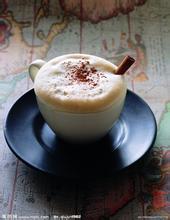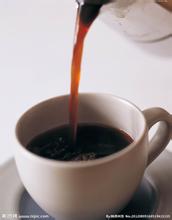Peruvian coffee that is well-balanced and can be used in mixed drinks.
In the mid-1970s, Peruvian coffee production was about 900000 bags a year, and then steadily increased to about 1.3 million bags a year. Although private exporters buy coffee in remote areas through middlemen, the main market is still monopolized by the government. Then came the private Comera de Exportadores de Cafe del Peru, which is committed to improving the quality of coffee. Its primary task is to set standards and eliminate inferior products, thus creating an atmosphere of quality supremacy. This positive move heralds a bright future for the coffee industry. Since then, rising prices have encouraged farmers to actively grow coffee rather than cocoa, the region's traditional cash crop.
Peru's finest coffee is produced in Chanchmayo, Cuzco, Norte and Puno. Most Peruvian coffee is grown under natural conditions, but it is also difficult to confirm the cultivation of all coffee trees. Coffee grown under natural conditions costs 10% to 20% more than others, and farmers may not have the money to buy chemical fertilizers and pesticides in terms of poverty, but it is really difficult to confirm all the coffee.
Peru
Peru
The quality of Peruvian coffee is comparable to that of any kind of coffee in Central or South America. High-quality coffee from Peru is shipped to Germany for blending and then to Japan and the United States, which on the other hand illustrates its high quality standards.

Important Notice :
前街咖啡 FrontStreet Coffee has moved to new addredd:
FrontStreet Coffee Address: 315,Donghua East Road,GuangZhou
Tel:020 38364473
- Prev

Ivory Coast, the country that has never produced the best quality coffee
In terms of quantity, it is one of the largest producers in the world. The coffee produced in C ô te d'Ivoire (C ô te d te dlvoire) is also rarely produced by Arabian coffee trees. In the early 1980s, it was the world's third-largest coffee producer, with an annual output of 5 million bags. Even today, it is still the fifth largest coffee producer in the world, with an annual output of 4.4 million bags. In terms of the output of Robbins Coffee
- Next

Hasunda Coffee Garden, a coffee-producing country in the Galapagos Islands
Coffee treasures from the hometown of giant turtles, this kind of coffee treasures are of excellent quality and do not use any chemical agents when growing. Coffee is grown in San Cristobal (Saint Crstbal). St. Cristobal is a larger island in the Galapagos Islands (Galapagos Islands) and the only one in the archipelago with plenty of fresh water. At 410 meters above sea level on the island
Related
- Does Rose Summer choose Blue, Green or Red? Detailed explanation of Rose Summer Coffee plots and Classification in Panamanian Jade Manor
- What is the difference between the origin, producing area, processing plant, cooperative and manor of coffee beans?
- How fine does the espresso powder fit? how to grind the espresso?
- Sca coffee roasting degree color card coffee roasting degree 8 roasting color values what do you mean?
- The practice of lattes: how to make lattes at home
- Introduction to Indonesian Fine Coffee beans-- Java Coffee producing area of Indonesian Arabica Coffee
- How much will the flavor of light and medium roasted rose summer be expressed? What baking level is rose summer suitable for?
- Introduction to the characteristics of washing, sun-drying or wet-planing coffee commonly used in Mantenin, Indonesia
- Price characteristics of Arabica Coffee Bean Starbucks introduction to Manning Coffee Bean Taste producing area Variety Manor
- What is the authentic Yega flavor? What are the flavor characteristics of the really excellent Yejasuffi coffee beans?

